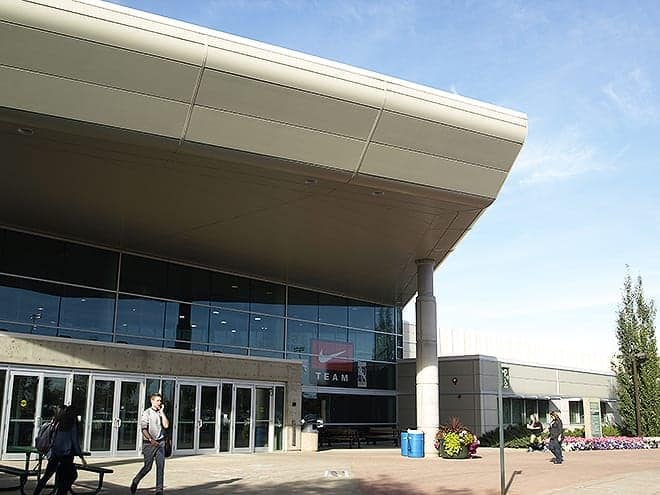Experimental wireless technology installed at U of R


The Kinesiology Building is one of the testing grounds for the new HetNet technology. Photo: Brett Nielsen
Partnership with SaskTel aims to improve service in Riddell Centre, Kin Building
The University of Regina has partnered with SaskTel to deploy a new cellular technology known as HetNet on the U of R campus. HetNet, an abbreviation of Heterogeneous Networks, is essentially a system of small cellular antennae designed to “provide deep penetration indoor, high capacity LTE coverage speeds of up to 150 Mbps.”
“This technology is the first of its kind in Canada and is being deployed to meet increasing demand for robust and reliable wireless service at the University of Regina,” said SaskTel President Ron Styles in a Jan. 8 press release.
The deployment of this new technology is intended to let grad students in electronic systems engineering gain hands-on experience with cutting edge technology. U of R students have been involved in every step of the process, from the initial development using simulations and modeling software, to the implementation and optimization of the system which is now up and running.
“The University is committed to working with community partners to provide our students with experiential learning opportunities,” said U of R President Vianne Timmons, “and this work is a wonderful example of how that commitment can benefit everyone involved.”
Dr. Raman Paranjape, a professor of electronic systems engineering at U of R, has been involved in the process throughout.
“There are certainly spots within the campus where we were having low signal,” Paranjape told the Carillon. “One of those spots was the Kin building, because they have exterior walls inside the building [due to renovation].”
“What we decided to do was turn the whole campus into an experiment system. SaskTel put antennae into both the Riddell Centre and the Kinesiology Building.”
There are some difficulties that come along with managing an experimental cellular network, including issues with cell users being bounced rapidly between different networks.
“You need to figure out how to keep the users that will be better served by the local antenna on the local antenna,” Dr. Paranjape told the Carillon. “You don’t want to ping-pong between the large cell [antenna] and the small cell [antenna].”
Technical issues aside, Paranjape is pleased that the U of R has the opportunity to help develop the HetNet along with SaskTel.
“It’s kind of a unique thing to be able to have this kind of relationship with a cell company,” he said. “We’re all learning from this.”
“There’s a win for the cellular provider, and there’s a win for the graduate students because they get to get as close as possible to cutting edge equipment, and there’s a win for staff and students because they get improved cell reception.”
According to Paranjape, those students who use SaskTel devices (or other devices on the SaskTel wireless network) should see an increase of three to four times in their wireless speeds in one of the HetNet areas.
“In Kin I believe they were getting 5mhz before,” he said, “and it should be shooting up to 20.”
Because of the understanding between SaskTel and the University to develop the HetNet technology together, the improved service will come at no direct cost – except for texting in class.









